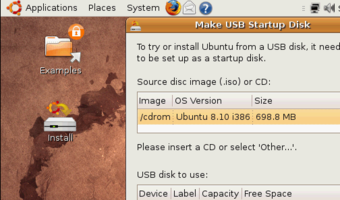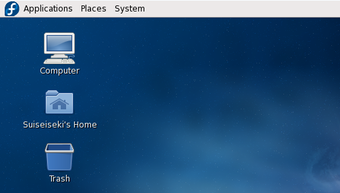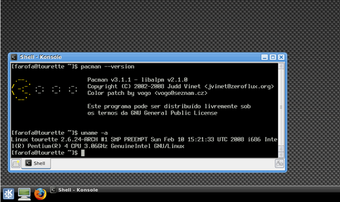Top 5 Best Popular Linux Distributions
By Avik, Gaea News NetworkWednesday, November 3, 2010
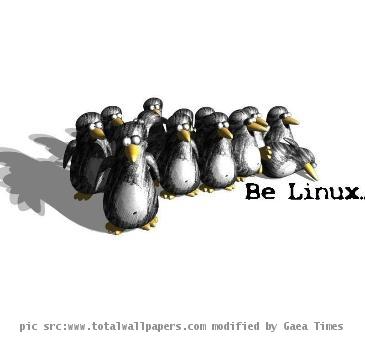
Interestingly, a large number of Linux distributions are available, may be cause it comes free of cost and there are a lot of unique reasons to like them. Well, why not try reading this and figure out for yourself as to which open-source operating systems inspired our readers to provide our biggest Hive Five response to date.
As a matter of fact the study have been done pretty much in details and here are the fruitful results for you, in the call for contenders, apart from asking which Linux distribution was your favorite, we went for a note on why, with the hope that readers new to Linux would learn a thing or two. Below are the most discussed upon and commented names.
openSUSE
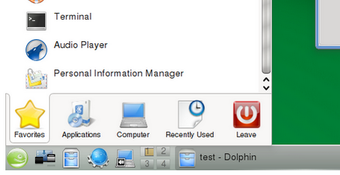 Installation may be a bit of issue unlike some of the other distributions on the list, but openSUSE is quite user friendly. Well, this distribution includes YaST (Yet another Setup Tool) which speeds up installing applications to a great extent. To add to this the user interface also gets a boost from Slab, there is a polished Windows Vista-like start menu. not only this openSUSE puts an emphasis on hardware support and ease of use, making typically troublesome tasks like setting up a multi-monitor system less awkward. Let me tell you, OpenSUSE is also part of the SMOLT driver project when you install it, you can opt in to participate in a hardware survey to help continue the growth of Linux and foster support for new hardware.
Installation may be a bit of issue unlike some of the other distributions on the list, but openSUSE is quite user friendly. Well, this distribution includes YaST (Yet another Setup Tool) which speeds up installing applications to a great extent. To add to this the user interface also gets a boost from Slab, there is a polished Windows Vista-like start menu. not only this openSUSE puts an emphasis on hardware support and ease of use, making typically troublesome tasks like setting up a multi-monitor system less awkward. Let me tell you, OpenSUSE is also part of the SMOLT driver project when you install it, you can opt in to participate in a hardware survey to help continue the growth of Linux and foster support for new hardware.
Ubuntu / Debian / Linux Mint
No offense to the Purists who might complain regarding the fact that we’ve opted to group Ubuntu, Debian, and Linux Mint together, but compared to the other top nominees, they have more in common than not. Ubuntu is based on Debian, and Linux Mint in turn on Ubuntu. Well, what that actually stated, they have distinctive appeals. Ubuntu currently has the largest share of the Linux user base, thanks in large part to a user-friendly installation, a desktop designed to accommodate first-timers, and a rigorous new released schedule. What’s more, Ubuntu also comes bundled with an extensive set of open-source software to cover the needs of first-time switchers, but also includes only truly free software in its default installation, winning fans on both sides of the open-source aisle. As a matter of fact, Debian may not come pre-packed with as many applications, but users can easily retrieve over 25,000 applications from Debian, third-party repositories, and sites like GetDeb.net. And interestingly, Linux Mint shares much of its lineage with Ubuntu, but aims for a clean, green-themed, mostly new look. While the distribution took place there was a strong focus on immediate functionality, with a largers driver set included at first installation which also included Mint Tools, a set of configuration apps and wizards that strive to make configuring and managing Linux as painless as possible.
Fedora
If you’re searching for an influential endorsement for a Linux distribution, sad to say that you won’t find a better stand than being the distribution of choice for Linus Torvalds, the father of Linux. As it is Fedora came into being in 2003 as a spin-off of Red Hat Linux’s free personal distribution, when the latter was discontinued. Even though technically a younger distribution, it’s a seasoned and solid Linux release with a strong corporate backing and user following. The fact remains that Fedora comes in a variety of “spins,” tailored with different apps and functionality, so you can get more of what you want without having to hunt it all down.
Arch Linux
There is the other one that is Arch Linux which essentially happens to be a lightweight Linux distribution which strives to “Keep It Simple”. The fact is that it’s definitely not a Linux distribution for novices, as it installs with just a bash command prompt and no GUI desktop the screenshot here shows Arch Linux with a basic KDE desktop installed. To add to it, in offering is a pretty lean, spartan system at first, but it can be quickly built onto using the Pacman package manager. To spicen up things there is an extensive list comparing Arch to other distributions in the distro’s wiki, and it’s definitely worth a look if you’re trying to decide whether Arch is for you.
Gentoo
Now, Gentoo Linux starts you off with even less than Arch, as you essentially build your system from scratch during the initial install. Though without any doubts, you can download a totally pre-packed version and even a live CD, but the traditional way to install Gentoo is to compile a unique configuration specific to your hardware and software needs right from the start. Inspite of a few drawbacks, there are tons of choices and options during installation, which are mostly pretty clear and holds an appropriate explanation. There are some readers who noted that, although they might have started with other distributions of Linux, it was only after they started using Gentoo that they actually got their hands dirty and learned how Linux really runs.
Tags: Arch Linux, Debian, Gentoo, Linux Mint, Open Source Operating Systems, OpenSuse, Ubuntu
